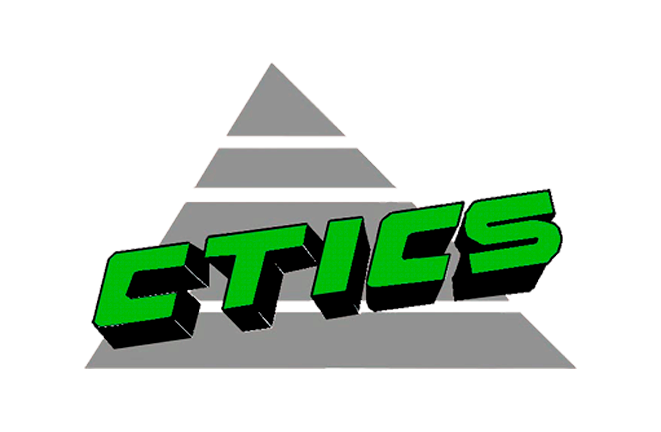WHO WE ARE
Centre Technique Interprofessionnel de la Canne et du Sucre CTICS

BACKGROUND & MISSION
Reunion Island’s Interprofessional Cane and Sugar Technical Centre
Since 1952, the Interprofessional Cane and Sugar Technical Centre’s core mission has been to scientifically measure the sugar level of cane deliveries to Reunion Island’s two mills each season. This task employs about sixty seasonal workers during the harvest that runs from July to December. An average of 160,000 analyses are processed every year in the centre’s nine laboratories.
CTICS is a support facility at the service of both growers and mills, jointly accountable to the French Ministry for Agriculture and Food and to the Ministry for the Economy, Finance and the Recovery . It also carries out an agricultural technical transfer programme, funded jointly by Europe’s EAFRD and by an interprofessional Joint Committee for Cane and Sugar (CPCS)
Working with the other industry stakeholders, it aims to be proactive and help growers with their administrative and technical procedures.
CERTIPHYTO certification
CTICS is certified under registration number RE00321 to provide independent advice on the use of plant protection products.
Knowledge transfer and information sharing: sugar cane and planting units
Promoting productivity in the field and farm resilience through planting while consolidating the cane reference system
CTICS technicians are based at the island’s six Cane Units where they:
- Assist growers with cane planting (field diagnosis – technical planting advice that may be combined with simple procedures such as GPS measurements or soil sampling)
- Facilitate contact between growers and the network of nursery workers for planting, ensuring monitoring and geo-referencing of land plots with cuttings
- Encourage cane planting by managing a portfolio of growers to monitor planting
- Provide administrative support for growers: grower registration, surface area declarations and subsidy management (transport subsidies, compensatory allowance for permanent natural handicaps, difficult area subsidy, Joint Committee for Cane and Sugar exceptional grant, etc.).
- Provide growers and industrialists with island-wide production estimates before the start of each season
Coordination of a joint resource for the industry: the Database Management System
CTICS coordinates a joint resource for the industry that helps optimise land resources and technical road maps as well as contributing to strategic discussions about the sustainability of agricultural land, specifically through a local monitoring centre. This system:
- Provides in-depth analyses for industry development
- Contributes to the goal monitoring carried out by Reunion’s Sustainable Development Plan for Agriculture and Agri-Food (PRAAD), as well as by the sugar cane component of the Regional Development Plan (SAR)
- Provides monitoring, warning, and decision-making tools based on the priorities set out by the Joint Committee for Cane and Sugar (CPCS) and the Technical Committee for Land Coordination (CTCF)
- Compiles subsidy requests, such as combining the natural handicap allowance with the transport subsidy and other economic incentives
- Observes and analyses land use changes in cane fields (60% of the UAA)
Agronomic experiments: Optimising cane fertilisation
Mainly conducting tests with growers, this project aims to optimise sugar cane fertilisation by adjusting various parameters (lime soil conditioners, organic soil conditioners, non-organic fertiliser formulas and fertilisation enhancers) with a view to:
- Ensuring balanced and effective fertilisation of fields to optimise the use of inputs
- Providing growers with the technical and economic resources to help them choose from an ever-increasing range of fertilisers and enhancers on the market despite a frequent lack of information about these products’ effectiveness in tropical conditions
Coordination of agricultural land improvement
The reason for coordinating land improvement is to optimise the resources the system allocates to farmers. This involves informing and assisting any farmer who would like to carry out land development to improve working conditions on their agricultural land by leveraging the aid scheme that is part of the Regional Rural Development Programme (PDRR).
This is mainly achieved as follows:
- Providing information for the agricultural community
- Training and approval of project management service providers specific to the land improvement (TAF) system
- Managing the website that connects those seeking to carry out land improvement work with accredited contractors
- Coordinating the Land Improvement Application Examination Committee (CIDT)
Organisation & Management
CTICS’ Board of Directors consists of 17 members: 6 grower representatives, 6 mill representatives, 2 technical staff representatives, and 3 qualified individuals appointed by Management.
The Centre is chaired alternately by mill and grower representatives. The Board’s current Chair is Edvin Payet, a grower in Saint-André, and the Vice-Chair is Florent Thibault, Agricultural Director of Téréos OI.
CTICS is jointly accountable to the French Ministry for Agriculture and Food, and the Ministry for the Economy, Finance and the Recovery.
To pay for sugar content measurement, CTICS receives a voluntary contribution of €1.36 per tonne of sugar cane, which is paid half-and-half by the grower and the mills.
It also benefits from subsidies (European, national and regional) which ensure funding for other activities (transfer of agricultural techniques: cane planting, the Database Management System, agricultural experiments, land improvement work).
CTICS’ annual budget is calculated on the standard basis of 1.8 million tonnes of cane per year, which corresponds to roughly €2.4 million.
In order to measure the sugar content, CTICS employs about 60 seasonal workers every year, who carry out approximately 160,000 analyses in nine laboratories located throughout the island. CTICS employs 40 permanent staff members.
CONTACT US
Please send us any questions, comments or suggestions using the form below.
